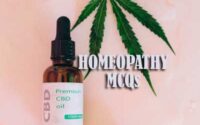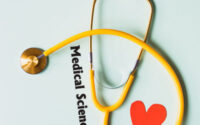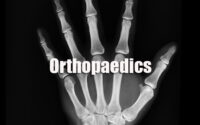Anatomy Practice Set
Anatomy Practice Set paper for the written examination is given below. Candidates who are looking for Anatomy exam Practice Set paper can find in this section. The applied candidates who are getting prepared for the Anatomy can view this page for the Anatomy Last Ten Years Practice Set Papers.

Download the Anatomy Practice Set & Solutions & make it as a reference for your exam preparation. Take advantage of these Anatomy Practice Set Papers in a proper manner to get qualifying Marks. Last 5 years Anatomy Practice Set Papers provided here. Candidates who are applied for the above exam can check and download the Anatomy Practice Set Papers from here.
Practice Set of Anatomy
1. Which of the following cell type can be used for Karyotyping?
(1) Neurons
(2) Erythrocytes
(3) Buccal mucosal cells
(4) Fibroblasts
2. The Trisomy syndrome that is associated with Kocher bottom feet is
(1) Klinfelter
(2) Patau
(3) Edward
(4) Down
3. The Barr-body seen in a
(1) Turner syndrome
(2) Klinefelter syndrome
(3) Testicular feminisation
(4) Karyotype 46 XY
4. Mutation is defined as alteration in
(1) DNA sequence
(2) mRNA formation
(3) Amino acids of polypeptides
(4) Cell wall receptors
5. The type of inheritance where an affected father transmits the disease to half of his children is
(1) Autosomal dominant
(2) linked recessive
(3) Mitochondrial
(4) X linked dominant
6. If a disease, caused by environmental condition, mimics a genetic disorder, it is called as
(1) Association
(2) Genocopy
(3) Phenocopy
(4) Heterogeneity
7. Gene bank characterised by all of the following, except :
(1) Collection of artificial recombined DNA molecules.
(2) Collection of artificial recombined RNA molecules.
(3) Useful in maintaining the Species that are on the verge of being extinct.
(4) Incorporated into bacterial plasmids.
8. Following statements are true about plastination, except : :
(1) It is a process to preserve the perishable biological tissue for long time.
(2) Technique was invented by Gunther Von Hagens.
(3) In modified short protocol plastination done by using epoxy resin.
(4) Plastinated tissue cannot be stored at room temperature.
9. Most commonly used contrast medium in Radiography is
(1) Barium sulphate
(2) Iodine
(3) Technetium
(4) Lead (Pb)
10. All statements are true about Magnetic Resonance Anglography (MRA), except :
(1) No exposure to X-ray.
(2) Its a short process than the traditional angiography.
(3) There is need to introduce catheter for the procedure.
(4) Procedure can be carried out without using contrast material.
11. In an intravenous pyologram, a stone is suspected at the pelviuretheral junction. It is likely to be visible near the transverse process of the following vertebrae :
(1) T10
(2) T12
(3) L2
(4) L5
12. Which artery was used by William Hunter during embalming for injecting chemical solution?
(1) Femoral artery
(2) Carotid artery
(3) Popliteal artery
(4) Axillary artery
13. All of the following criteria are considered for rejection of body in body donation process, except :
(1) Body of medico legal case
(2) No consent of family / blood relatives
(3) Extreme obese
(4) Body with removed organ (Epeer)
14. First Manual on Anatomy was written in:
(1) Egypt about 3400 BC
(2) Greek Era 450 BC
(3) Modern Era 15th to 16th century
(4) None of these
15. The term Histology was coined by
(1) Mayer (1819)
(2) Bichat (1771-1802)
(3) Marcello Malphigi (1628)
(4) Robert Hooke (1635)
16. Which of the following is the thickest intervertebral disc?
(1) Disc between C5 and C6
(2) Disc between T12 and L1
(3) Disc between L5, and S1
(4) Disc between S1 and S2
17. Isometric muscle contraction is defined as
(1) length of muscle changes but tension does not increases
(2) length of muscle changes and tension increases
(3) length of muscle remain constant but tension increases
(4) length and tension of muscle both remain constant
18. Which of the following is NOT an end artery?
(1) Central artery of Retina
(2) Facial artery
(3) Medullary branches of cerebral artery
(4) Arteries of spleen
19. Father of modern anatomy
(1) Vesalius
(2) William Harvey
(3) John Hunter
(4) Malpighi
20. A trend towards simplification of anatomical nomenclature began?
(1) In 17th century
(2) In 18th century
(3) In 19th century
(4) In 20th century
| Practice Set | MCQs |
| Quiz | Questions and Answers |
| Important Questions | Viva Questions |
21. The term anatomy is derived from the Greck word anatome whose meaning is
(1) to analyse
(2) to cut up
(3) to observe death
(4) to cut anus
22. What is true about Hippocrates?
(1) He was a famous Greek Physician.
(2) He had wide exposer to human dissection.
(3) He had attributed disease to natural cause.
(4) He is regarded as father of medicine.
23. All are true regarding thymus, except :
(1) it is located in superior mediastinum
(2) secrets thymosin
(3) filters blood to remove blood borne antigens
(4) receives immunologically incompetent cells from bone marrow
24. The right sequence of reflex arc is
(1) sensory receptor — afferent neuron — association neuron — efferent neuron — effector organ
(2) sensory receptor — association neuron — afferent neuron — efferent neuron — effector organ
(3) effector organ — efferent neuron — association neuron — afferent neuron — sensory receptor
(4) afferent neuron — sensory receptor — association neuron — efferent neuron — effector organ
25. The spinal nerve which is not associated with its specific dermatome
(1) C1
(2) C7
(3) C8
(4) T1
26. Strongest ligament of body is
(1) Round ligament
(2) Iliofemoral ligament
(3) Ischiofemoral ligament
(4) Pubofemoral ligament
27. Segmental innervation of hip joint is
(1) L1, L2, L3, L4
(2) L2, L3, L4, L5
(3) L3,L4, L5, S1
(4) L4,L5,S1, S2
28. Circumduction is defined as combination of
(1) flexion, extension, abduction and adduction
(2) abduction, adduction, extension and flexion
(3) extension, flexion, adduction and abduction
(4) flexion, extension, adduction and abduction
29. Largest carpal bone is
(1) Scaphoid
(2) Capitate
(3) Hamate
(4) Pisiform
30. Distal end of humerus develops from how many centres?
(1) 1
(2) 2
(3) 3
(4) 4
31. Most comm site of clavicle fracture
(1) between medial 1/3rd and lateral 2/3rd
(2) medial end
(3) lateral end
(4) between medial 2/3rd and lateral 1/3rd
32. Upper border of public ramus forms
(1) pubic tubercle
(2) pubic symphysis
(3) arcuate line
(4) upper mat gin of obturator foramen
33. Which one of the ligament supports talus?
(1) Spring ligament
(2) Deltoid ligament
(3) Lateral calcanium ligament
(4) Cervical ligament
34. Nutrient artery to femur is a branch from
(1) femoral artery
(2) profunda femoral artery
(3) lateral circumflex femoral artery
(4) popliteal artery
35. Which among the following is the longest Rib?
(1) 7th Rib
(2) 9th Rib
(3) 1st Rib
(4) 12th Rib
36. Xiphoid process lies at the level of
(1) T9 vertebrae
(2) T7 vertebrae
(3) T5 vertebrae
(4) T3 vertebrae
37. Metopic suture closes at the age of
(1) 6 months
(2) 3 years
(3) 6 years
(4) 60 years
38. Reid’s line extends from
(1) Infraorbital margin to superior margin of external acoustic meatus
(2) Infraorbital margin to centre of external acoustic meatus
(3) Infraorbital margin to inferior margin of external acoustic meatus
(4) Supraorbital margin to inferior margin of external acoustic meatus
39. Coracobrachialis is pierced by the following nerve :
(1) Axillary nerve
(2) Median nerve
(3) Musculo-cutaneous nerve
(4) Ulnar nerve
40. Muscle acting both on knee and ankle joint is
(1) Soleus
(2) Plantaris
(3) Tuibialis posterior
(4) Flexor hallucis longus
41. Femoral ring is bounded by the following structures, except :
(1) Femoral vein
(2) Inguinal ligament
(3) Femoral artery
(4) Lacunar ligament
42. Muscle which is not pierced while pleural tapping in mid axillary line
(1) Internal intercostal
(2) External intercostal
(3) Innermost intercostal
(4) Transverces thoracic
43. Pyramidalis muscle is supplied by
(1) Subcostal nerve
(2) Ilioinguinal nerve
(3) Iliohypogastric nerve
(4) Genitofemoral nerve
44. Which of the following muscle depresses the mandible?
(1) Medial pterygoid
(2) Lateral pterygoid
(3) Masseter
(4) Temporalis
45. Which of the following muscle of palate is not supplied by the cranial part of the accessory nerve fibres?
(1) Tensor veli palatini
(2) Palatopharyngeus
(3) Palatoglossus
(4) Musculus uvulae



